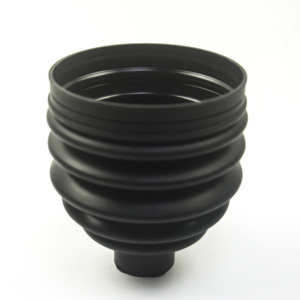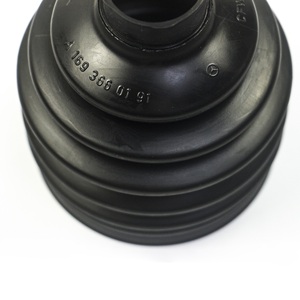Types of Auto Parts
Auto parts can be classified into two main categories: original equipment manufacturer (OEM) and aftermarket parts. OEM parts are made by the manufacturer that made the vehicle. They are identical to the parts that were in the car when it was bought. For example, if a Toyota car owner uses a part made by Toyota, like a brake pad or a headlight, that's an OEM part. It ensures that the car runs smoothly and safely, just like when it was new. On the other hand, aftermarket parts are made by other companies. They might be slightly different from the original parts but can still be used in the vehicle. For instance, a Ford car owner might choose brake pads made by a different company instead of the one that made the car. The pads would meet the required standards for Ford cars but wouldn't be made by Ford itself. Aftermarket parts usually come at a lower price than OEM parts.
Auto parts also fall into two categories: general auto parts and specialty auto parts. General auto parts are used in many types of vehicles. For example, tires, batteries, and spark plugs are considered general auto parts because they are needed for the functioning of most cars. Specialty auto parts are made for specific vehicles or types of vehicles. For instance, a suspension kit made for a particular model of a truck would be a specialty suspension auto part because it's designed to fit only that model perfectly.
- Engine parts: Internal combustion engines use a lot of components to create controlled explosions that power the vehicle. Air and fuel have to be mixed and then ignited, creating a blast that pushes the pistons down. The intake and exhaust valves control what goes in and out of the engine. Cooling and lubrication are also needed to ensure the engine runs smoothly without overheating or seizing up.
- Transmission parts: The transmission takes the power from the engine and makes it work the wheels. Gears are used to change the power and speed going to the wheels so that they can move slowly or quickly, depending on the driver's needs. Clutches and torque converters help connect the engine to the transmission and allow for smooth gear changes.
- Chassis parts: The chassis is the car's body. It has the frame that holds everything together and the axle that connects the wheels. The suspension system makes rides comfortable by keeping the wheels on the ground, even over bumps. It has springs and shock absorbers. Ropes called cables help control different parts of the car from inside the cabin.
- Electrical parts: Batteries store power to start the car and run everything, even when the engine isn't on. Alternators keep the battery charged while driving, and terminals connect the parts. Wiring harnesses are like highways for electricity, moving power to where it's needed. Fuses protect the circuits from too much power. Lights help see the road, inside the car, and for signaling. Sensors keep track of what's happening in and around the car. Switches let drivers control everything, from turning on the lights to changing gears.
- Body parts: The exterior parts, such as the panels, bumpers, hood, trunk, lights, and windows, make up the car's body. They protect the inside and help it look good. The interior has seats, a roof, and walls. Seatbelts keep everyone safe. The dashboard shows important information and controls everything.
- Brakes: Braking parts are vital for slowing down and stopping the car. Brake pads, brake calipers, brake discs, brake drums, brake lines, and brake cylinders work together to bring the vehicle to a halt safely.
- Tires: Tire and wheel auto parts keep the car on the road. Tires give grip and can change shape to handle different surfaces. Wheels hold the tires and let them spin, stopping the car and making it go.
- Fuel system components: Fuel system parts, such as fuel pumps, fuel injectors, and carburetors, give power to the engine by sending gas or diesel from the tank to the engine. They ensure the vehicle runs smoothly.
- Air conditioning and heating parts: HVAC (heating, ventilation, and air conditioning) components, such as A/C compressors, condensers, and evaporators, control the temperature inside the vehicle. They keep things comfy, whether cooling down or warming up.
Specifications and Maintenance of Auto Parts
Auto parts have different specifications depending on the type, model, and make of a car. Here are some general specifications of auto parts:
- Compatibility: Auto parts are designed to function and fit seamlessly with other parts of a car. For instance, a brake pad should work with the brake caliper and brake rotor.
- Quality and reliability: Quality and reliability are key specifications of auto parts, especially for critical components that ensure safety, such as brakes and engines. Quality auto parts enhance reliability and ensure consistent and durable performance.
- Performance: Different auto parts are designed to perform different functions to ensure optimal and efficient performance.
- Standards and regulations: Auto parts must meet mandatory legal requirements in different regions. The rules and regulations are put in place to ensure safety and lessen environmental impact.
Below is the maintenance of auto parts:
- Engine: The air filter should be changed every 15,000 miles. The oil filter and engine oil should be changed every 3,000 miles. The spark plugs should be checked every 30,000 miles. The fuel filter needs a replacement after 30,000 to 50,000 miles.
- Tires: Tires should be rotated every 5,000 to 10,000 miles. They should be replaced after 25,000 to 50,000 miles. The tire pressure should be checked every month, and new tires are required when the tread depth reaches 2/32 of an inch.
- Brakes: Brake pads should be inspected every 10,000 miles and replaced after 25,000 to 70,000 miles. Brake rotors need inspection every 20,000 miles and replacement after 30,000 to 60,000 miles. Brake lines should be checked every 12,000 miles for leaks and corrosion.
- Suspension: The wheel alignment should be checked every 10,000 miles. Shock absorbers and struts require inspection after 50,000 miles. Control arms, bushings, and joints should be checked for wear and tear every 15,000 miles.
- Electrical system: The battery should be checked every 10,000 miles and replaced after 3 to 5 years. The battery terminals should be cleaned every 6 months. The alternator and its connections require a check every 20,000 miles. The fuses and wiring should be inspected every 15,000 miles.
How to Choose Auto Parts 500
Choosing the right auto parts 500 can be a daunting task for business buyers. Here are some tips to help them make informed decisions:
- Buyers should consider the make, model, and specifications of the car when selecting auto parts. This will ensure that the parts are compatible with the vehicle.
- Quality is a major aspect to consider when choosing auto parts. Buyers should select auto parts from reputable manufacturers. Parts from unknown manufacturers might not last long.
- Business buyers should choose auto parts that have warranties. The warranty is a show of confidence from the manufacturer about the quality of the product.
- Price is a key factor that influences the choice of auto parts. Buyers should compare the prices of different suppliers and manufacturers. This will help them get parts that are within their budget.
- Business buyers should read online reviews to get feedback from other customers. This will help them know the quality of the auto parts from a specific supplier.
- To be on the safe side, buyers should consult a professional mechanic before selecting auto parts. The mechanic will advise them on the best parts to select depending on their budget and the vehicle model.
How to DIY and Replace Auto parts 500
Many car repairs are more difficult than they appear. While someone may be tempted to fix the car themselves to save money, it may not always be the best choice. With modern cars having complex systems, it may be hard to diagnose and repair a problem without specialized training and knowledge.
That said, here are some basic guidelines on how to Auto parts 500.
-
Brakes:
Check the owner's manual for instructions. Generally, removing the wheel, retracting the caliper pistons, and replacing the brake pads or shoes is required. Remember to bleed the brake lines if necessary.
-
Oil Filter:
Get a new oil filter. Ensure it's the right one for the vehicle. Follow the instructions in the owner's manual. Typically, draining the oil and removing the old filter before installing the new one is required.
-
Battery:
Disconnect the negative cable first, followed by the positive cable. Remove the old battery and install the new one. Reconnect the cables, starting with the positive.
-
Tires:
Loosen the lug nuts, lift the car with a jack, change the tire, and tighten the lug nuts. Follow the instructions in the owner's manual.
-
Oil change:
Place the oil pan under the oil pan. Use a wrench to remove the oil pan bolts. Then, replace the gasket and tighten the bolts. Start the engine and check for leaks.
Q and A
Q1: How long should the warranty for auto parts last?
A1: The warranty period for car parts varies depending on the part and manufacturer. However, most aftermarket parts have a 1-year to 3-year warranty, while OEM parts have a 3-year to 5-year warranty.
Q2: What should retailers do if they receive faulty auto parts from suppliers?
A2: If the auto parts are faulty, retailers should return them to the supplier as per the terms of the warranty. They should also notify the supplier about the quality control issues so the supplier can take the necessary action.
Q3: How can retailers find reputable auto parts suppliers?
A3: Retailers can search for reputable auto parts suppliers online. They should read customer reviews, compare supplier quotes, and check the supplier's transaction level and trade assurance to find a reliable partner.
Q4: Do all auto parts need to be installed by a professional?
A4: Some simple parts, such as batteries, floor mats, and wiper blades, do not require professional installation. However, complex parts such as engines, suspensions, and brakes require professional installation to ensure safety and functionality.









































































































































































